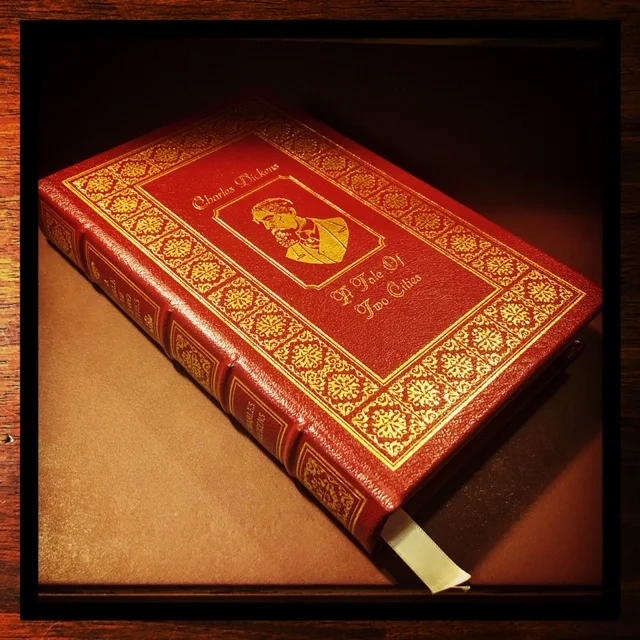Since I first read Charles Dickens’ seminal novel A Tale of Two Cities in high school, I have cited it as one of the best books I’ve ever read. But that was long ago, and the story had faded in my mind. I’ve wanted to read it again for years, but I was afraid. The shine of memory is a real thing – some might call it nostalgia - and often makes things seem better than they really were. I didn’t want to shatter the glass through which I viewed the book; I didn’t want to re-read one of my favorite novels only to learn that it wasn’t as wonderful as I remembered. That would be a tragedy.
For those unfamiliar – and without spoiling anything – A Tale of Two Cities takes place in the years leading up to and during the French Revolution, and concerns the struggle of one family to find each other and remain together, set against the backdrop of one of the bloodiest and ugliest periods in human history.
Dickens didn’t necessarily have to tell his story during that period, but he was wise to do so. The intimacy of the main characters stands in stark juxtaposition to the massive inhuman forces of the revolution, and as such the story becomes all the more powerful. With themes of love and loss, parting and reunion, simple kindness and human brutality, death and resurrection, I simply don’t think it can be denied that this is Dickens’ greatest work.
It has long been observed that perhaps Dickens’ greatest strength is the clarity and depth of his characters. And among a cast of memorable characters both major and minor, I believe A Tale of Two Cities contains one of the greatest and most human characters ever written. I’ll refrain from naming the character here, but those who have read the book will know. This character follows one of my favorite tropes in literature: the hidden protagonist, the central character who is relegated to the shadows for most of the story, and who you will not realize is the lynchpin of the story until the final chapters. This character also stands as the model and precursor for another of pop-culture’s most popular characters, one from a certain series about a magical young boy.
All that being said, every writer – myself included – would do well to learn a lesson from Dickens: Everyone, no matter how big or small a role they play – is a character.
Reading A Tale of Two Cities in the year 2018 is a remarkable experience. The events of the Reign of Terror do not seem as implausible now as they would have perhaps even a decade ago. The events of that period are in frightening alignment with our current times, displaying everything from unreasoned discourse to the violence that results, from compelled speech to the demand to conform to the revolution or die by its hand. I was not expecting – but also not surprised – to find that this story is just as, if not more relevant now than it was when it was written.
It is only now, looking back on it, that I can see how very influential this novel was on me and my writing. I see echoes of it in many of the stories that I’ve written. And I see it in the creations of others, most recently and perhaps most significantly in the work of another of my favorite storytellers – Christopher Nolan. He has been quite straightforward about the influence of A Tale of Two Cities on his own work, and it is most apparent in films like The Prestige and The Dark Knight Rises. I have often thought that Nolan would be perfectly suited to bring a big-budget production of this story to the screen.
And in my most fanciful daydreams, I have always wanted to be a director myself, and this is an adaptation I would love the chance to helm. The images of the story exist in my head with nigh-perfect clarity. The film already exists in my mind.
So in reference to my opening: A Tale of Two Cities not only stands as one of the greatest pieces of literature I’ve ever encountered, but I love it more now than I did before. It is sweeping and epic in scope yet intimate at its heart. It not only held up against my memory, it surpassed it. It surprised me, inspired me, and moved me all over again.
A Tale of Two Cities is not only one of my favorite stories, it is my favorite kind of story: beautiful in its sorrow, hopeful in its darkness, aching in its redemption, and utterly triumphant even in the midst of its tragedy. And Dickens gets at that truth perhaps better than any other: That what is tragic on earth is triumphant in eternity. That current suffering is worthwhile in the face of heavenly glory. That the least among us might very well be the greatest. And that the goodness and courage of one ordinary man can make all the difference.
